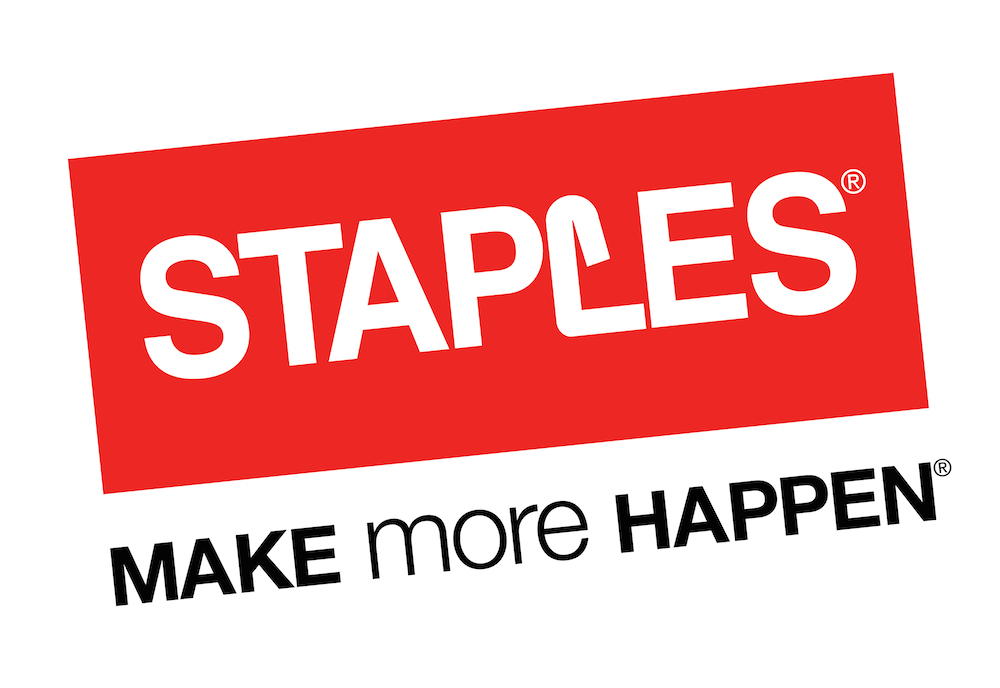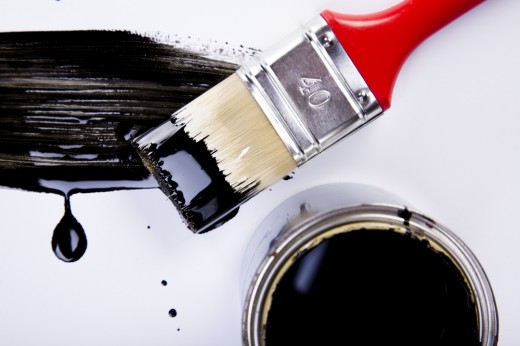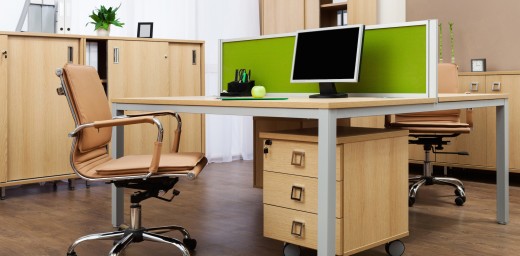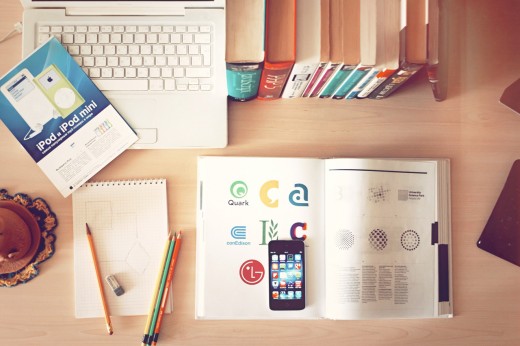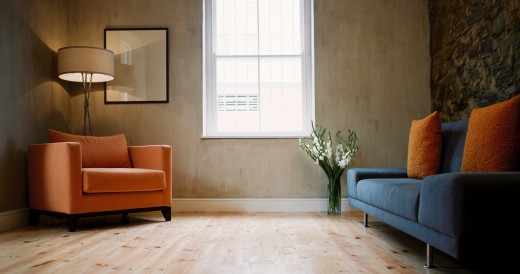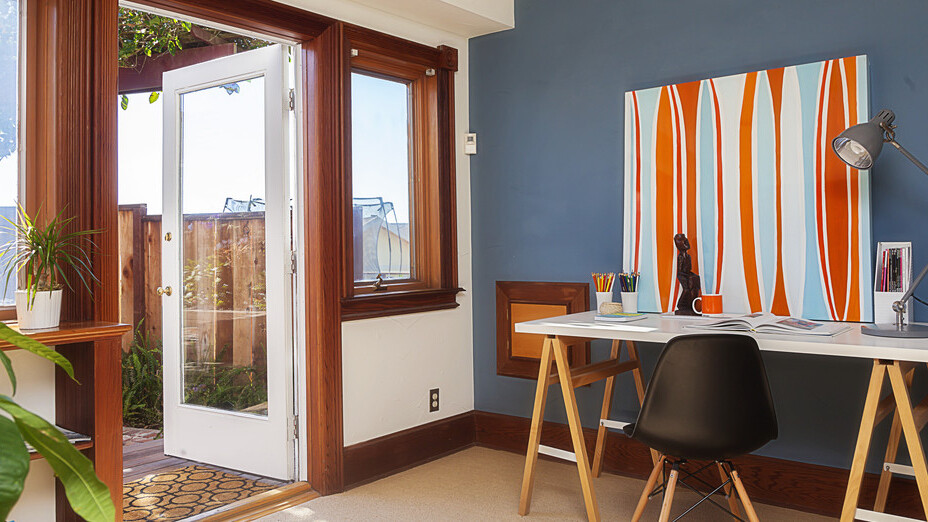
We’re all looking for quick ways to intuitively boost productivity. Today, there are many apps and services to help keep you organized and stay on task. There are books, articles and entire websites that focus on helping you change how you work. But did you know that you can work on the environment around you to help boost productivity?
You spend a lot of time in your office (or your employees spend a lot of time in theirs). Your office space help your productivity instead of work against it.
The good news is that there are a few things you can do to your office or company’s space to give an added boost of inspiration without directly changing how you or your employees work. And the best news of all? It can be done quite affordably.
Wall color
When designing any type of office, whether it be a home office or an office setting for multiple people, deciding on a wall color should be a priority, as the psychology of colors could either help or hurt productivity.
Paint is a relatively cheap fix for any type of office (home offices average about a $50 per change, larger offices could be looking at $200 to $1,000 depending on the size) and it provides the biggest overall impact.
With any kind of design, colors play an important role because they can often be directly tied to feelings. There is a large body of knowledge behind the psychology of colors that can help you pick the right paint color for your walls.
For your office space, you may want to stick to the lighter color hues as they often help convey a sense of calm, airiness, and openness. Cooler colors (greens, blues, purples) are often associated with being relaxed and inviting, while warmer colors (yellows, oranges, reds) are often associated with warmth and creativity.
To promote the best productivity for anyone who will be using the office space, don’t use very bold and bright colors unless you use them in specific areas and at a minimum. Having an accent wall with a bright color could help break up the office area and give some visual interest and inspiration (and prevent a cave-like feeling some offices tend to give people). Also, don’t use dark colors of any hue in abundance as they tend to make your office feel cramped and uninviting.
For ideas on what types of colors to use in your office space, simply do a Google image search for offices or office paint colors to get inspiration. Pinterest is another place you can go for some great inspiration on office space colors.
Desks and chairs
The amount of desk space needed really depends on the type of work being done. Those who will be working on the computer all day could probably have less space than those who do a lot of hands-on type of work (i.e. drawing, paperwork, assembly, shipping, etc).
When selecting the desk that either you or others will be using, make sure that it can accommodate all of the tasks they typically do and allow space for storage as well.
The best way to judge this is to look at how you or others are using their desk space currently. Are things stacked up around them? Or do they have lots of empty space? Are you always having to move things to get to other things or to find an area of your desk to work? These are things to consider when picking a desk option.
You will also want to look into the type of chair you are using. With those of us who sit at a computer all day, the chair that we plant ourselves in for eight or more hours a day is important not only to our productivity, but our health as well.
Finding a great ergonomic chair that will allow you to sit up straight and give you the support you need will help keep you focused and avoid the need to get up all the time to help stretch out your back (although, you do need to get up at least once an hour to give your brain and your body a break).
Choosing and using a desk and chair combination to get work done can be as challenging as picking a wall color, and often vary widely in price, but there are always options that fit just about everyone’s budget.
Proper storage
Going hand in hand with selecting a desk is the amount of storage needed to do the job. Depending on the type of work being performed, there should be storage for paper and files; computer equipment and peripherals; basic office supplies like pens, tape, and paper; and other types of storage that may be specific to the type of job being performed.
There are thousands of ways to store things for your office, but finding the most efficient and affordable options are key. Desk space is often limited, so finding other storage options that can help you de-clutter the desk space can help boost productivity as it will keep you from having to spend time moving piles around or finding something you need.
Look into storage such as bookshelves or wall shelves to store quick-access things that you use on the daily basis. Consider having a table close-by where you can put your stacks of paper and files so that they aren’t on your main workspace.
Keeping your things organized and everything has its own place will limit the amount of time you look for things and the amount of stress you have (the more cluttered your desk, the more stress you may feel).
Lighting
Finally, look into the type of lighting that lights your office space. Most people thrive and are the most productive when there is a flood of natural light into their work area. Make sure you can utilize all of your windows well and position desks so that they get lots of natural light at their workspace.
Not all offices, however, are blessed with ample windows. If this is the case for your office, a bit of trickery may be needed. Mirrors can help bounce light around the room and will actually help light your area.
If you have an office that has windows only on one side of the room, consider putting large mirrors on the opposite wall of the windows. When the light pours through those windows, the mirrors will reflect it back into the room in different directions. It will also make the office feel bigger and more airy as well as it gives the illusion of depth.
If natural light isn’t an option, make sure that the overhead lights provide enough lighting for the tasks at hand. If lighting is poor in your office (often the case with home offices that are often in basements or other dim areas of the house), consider investing in a floor lamp or two and/or a desk lamp.
There are also a handful of other small things that can be done to boost productivity. Having pops of color at your desk helps eliminate any bland or dull feelings (i.e. bright red stapler, blue pen holder, etc.). Adding personal mementos such as pictures can help give motivation and warm feelings while you’re working. Finally, consider adding a small plant in your office space to provide fresh air and warmth to your space.
All of these things are quick changes that you can do to any office space to give yourself a boost in productivity without changing the way you work. Give them a try and see how your work levels adapt!
Top image credit: Shutterstock/MR. INTERIOR
Get the TNW newsletter
Get the most important tech news in your inbox each week.
This post is brought to you by Staples - We have everything your business needs to Make More Happen every day, including furniture and décor to boost productivity.
